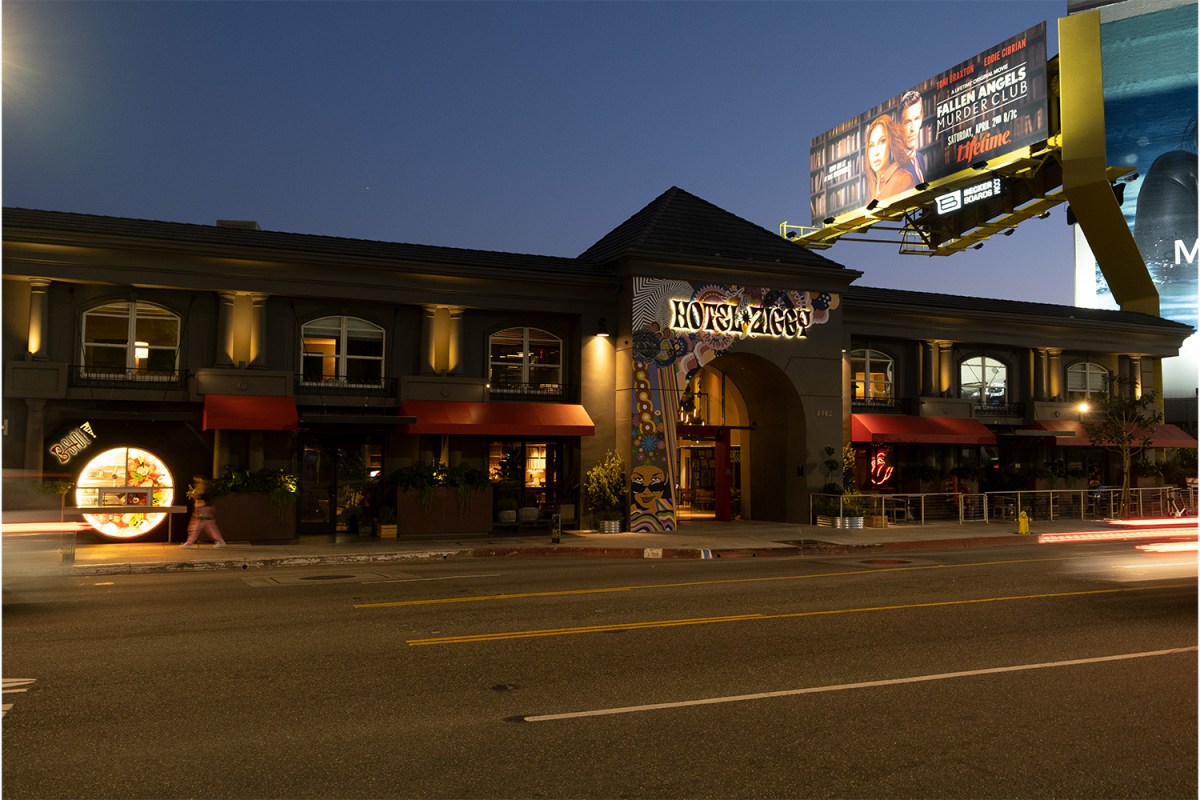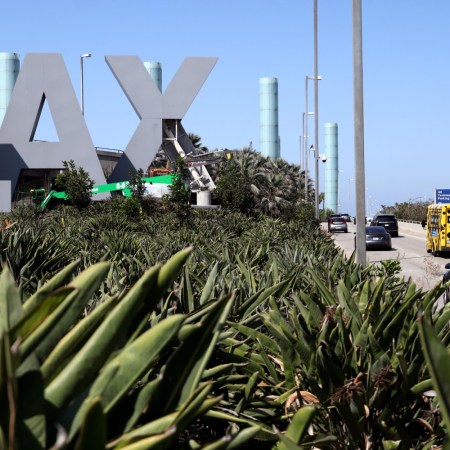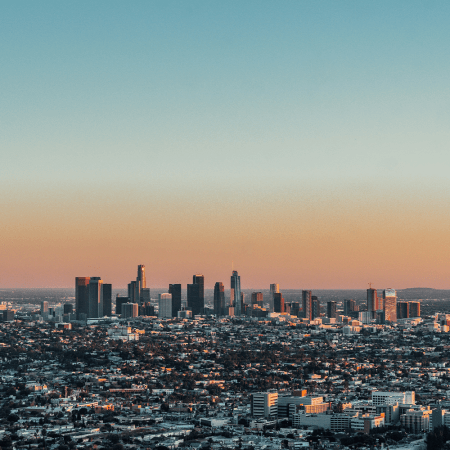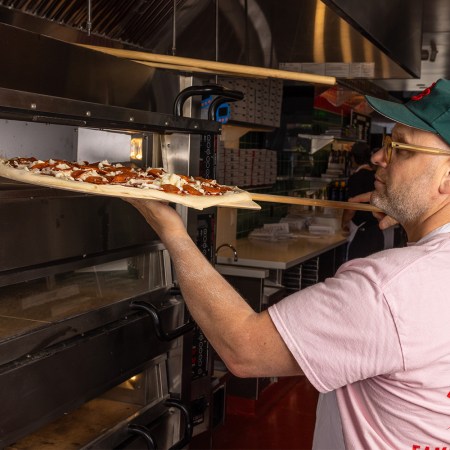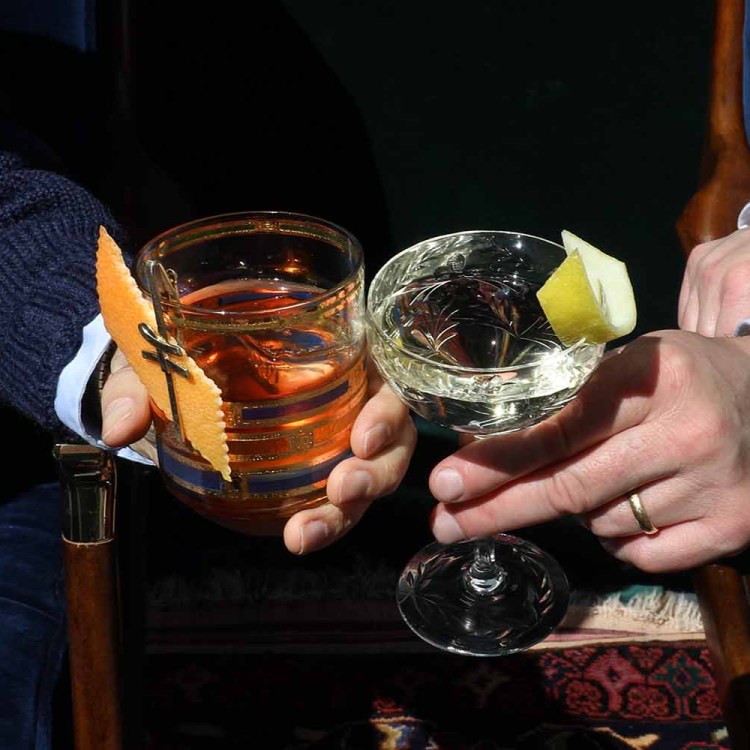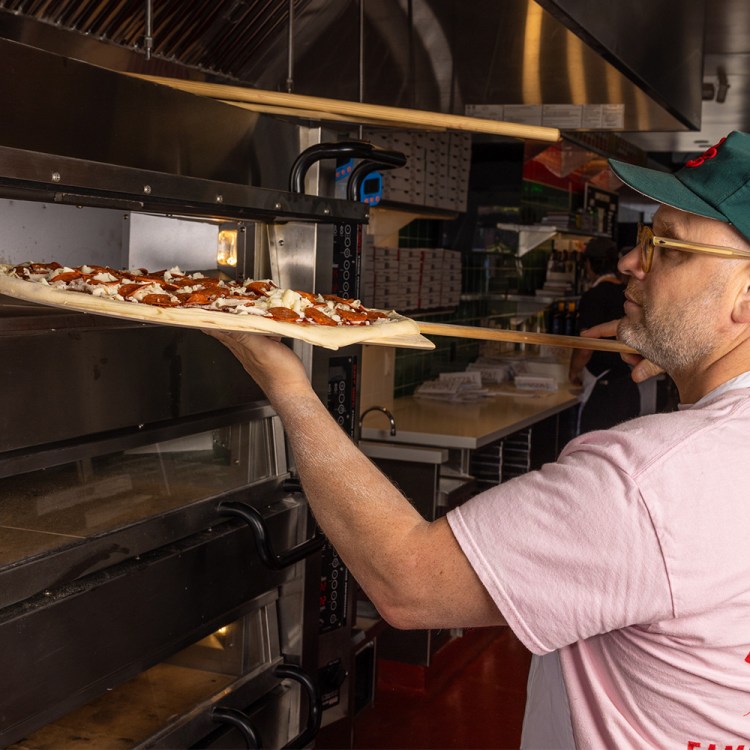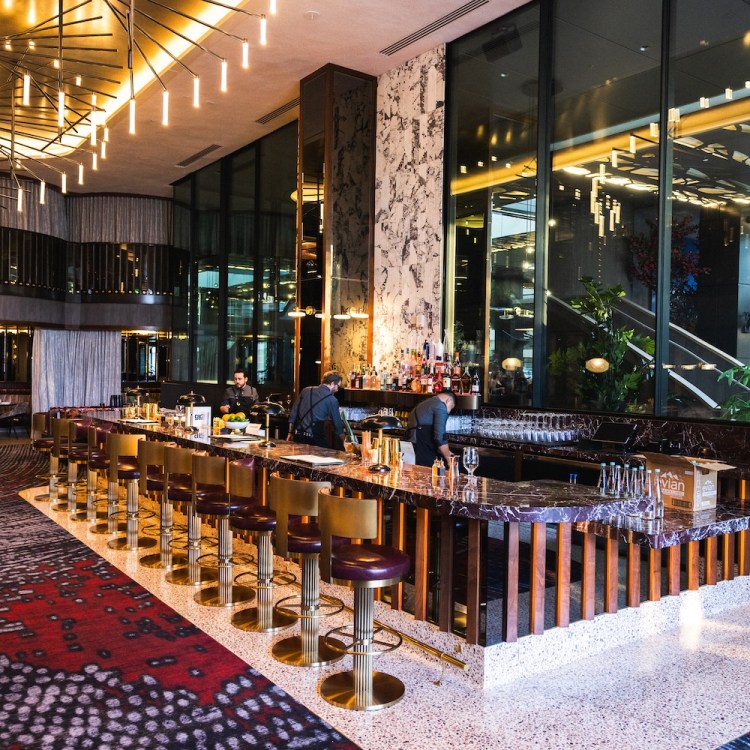Even decades after its heyday, the colorful history of the Sunset Strip continues to fascinate Angelenos. A reinvention of the previous tenant, The Grafton, Hotel Ziggy takes an emphasis on that rock and roll history and turns it up to 11. With a generous nod to the influence of David Bowie — aka Ziggy Stardust, the hotel’s namesake — the property positions itself as a rebel that pays homage to the neighborhood’s lost age.
“Ziggy is a place for musicians to take a stand and celebrate the importance of experimental music,” says Andrea Dawson Sheehan, art director and founder of Dawson Design Associates, who led the hotel’s transformation into Ziggy. “David Bowie became the perfect muse for our hotel, and his rebellious, counter-culture spirit and originality is something to celebrate.”
Owned by Pebblebrook Hotels, Ziggy features 108 rooms with nightly rates starting at $299 — a surprisingly attainable price for the Strip. Decoupaged walls feature a host of musical memorabilia, photos, lyrics and other tokens of the rock icons who have lived, visited or otherwise left their mark on the Strip. In short, it’s a music lover’s paradise.
Though the hotel itself is a new concept, the building has been part of the neighborhood for decades. Local historian Jon Ponder, a member of the steering committee for the West Hollywood History Center, notes that the building Hotel Ziggy now occupies was first built as apartments back in the ‘50s. “The [current] building was constructed in 1955 as the Park Sunset Apartments,” he tells InsideHook. “That puts it well past Prohibition, which ended in 1934. Old photos show a residence at that address, and it’s possible it was repurposed as a speakeasy in the 1920s.”
Ponder, who has himself been a resident of WeHo since 1998, also offers a potential explanation for our continuing collective fascination with the area.
“The Strip is much older and has been world-famous for longer than most people assume,” he explains. “Sunset was extended westward from Laurel Canyon Boulevard in 1906. During Prohibition, it was an unpaved drive lined with roadhouses that offered illegal booze and high-stakes gambling to the stars on their way home to Beverly Hills from work in the studios in Hollywood.”
And, Ponder predicts, the neighborhood’s current flux will lead back to an emphasis on entertainment. “Today the Strip is in a transitional phase similar to that of the 1950s,” he says. “Its next iteration appears to be as a self-contained, high-end entertainment zone that will offer accommodations, restaurants and nightclubs.”
With a grand reopening in early April, Ziggy is poised to do just that. In the revamped space, guests check in at the bar, which is an extension of a ground floor pizza joint, aptly named B-Side Pizza. On the other end of the lobby, a flexible event space dubbed Backbeat is a working venue for future shows and private concerts. Floor-to-ceiling musical memorabilia is balanced out with black waffle, acoustical recording studio baffles, effectively bringing a studio feel into the space. In order to achieve the wide-open feel of the lobby floor, the property had to strip back remodeling from plenty of tenants the building housed since it was built and remodeled, breaking down walls that created a series of tiny rooms and reclaiming the area as one big open space.
“We wanted to go back to the building’s original bones and cleanse it of all the superficial layers added through the years,” Sheehan says. “Architecturally, the first thing we did was strip down the hotel and open it up from end to end so the performers and guests could be seen and heard.” Sheehan also notes the vibe for the lobby is somewhere between “1970s neighborhood record store and an amateur recording studio,” and the ‘60s-style millwork and rustic wood floors definitely help achieve that, with Bowie always front and center as a guiding light: “The entire hotel experience celebrates his progressive spirit.” Bowie also has a cameo on the building’s exterior, above the front entrance.
Since most hotels nearby feature rooftop pools, which tend to be on the smaller side, Ziggy also happens to boast one of the largest pools on the Strip. The property’s three floors of rooms are built into the hillside, dropping into a central courtyard where the pool is located. “The outdoor patio was designed to be reminiscent of a 1960s ‘hippie herb garden,’” Sheehan explains, while noting the rooms continue the lobby’s bohemian vibe with custom murals and a mix of contemporary and vintage furniture. Aside from the ground floor space, a lofted communal area includes a pool table and a balcony overlooking the lobby, with separate media rooms and boardrooms available for rent. A massive “chandelier” made up of hanging lights and vintage speaker parts — some of which still work — is the piece de resistance visible from this balcony.
These attempts to tie into the Strip’s past sit just fine with a lifer like Ponder: “I was, and am, a huge Bowie fan,” he says. But he also notes that most of the other music history in the area has already been demolished — or is set to be. “The Whisky A Go Go’s still going strong, as is the Roxy,” he says. “1 Oak occupies the lot where Gazzarri’s rock club once stood. It was red-tagged in the Northridge Quake. The Viper Room building is the oldest commercial structure on the Strip, and it once housed the Melody Room, a famous jazz club. That entire block is slated for demolition to make way for a hotel, but the owners say they’ll devote space on the street level for a new Viper Room.” With Ziggy adding at least one more music venue to the area, perhaps the revamped Viper Room will be soon to join.
This article was featured in the InsideHook LA newsletter. Sign up now for more from the Southland.
